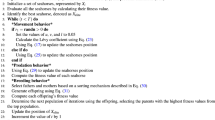Abstract
Various artificial intelligence (AI) algorithms have been proposed in the literature, that are used as medical assistants in clinical diagnostic tasks. Explainability methods are lighting the black-box nature of these algorithms. The objective of this study was the extraction of rules for the assessment of brain magnetic resonance imaging (MRI) lesions in Multiple Sclerosis (MS) subjects based on texture features. Rule extraction of lesion features was used to explain and provide information on the disease diagnosis and progression. A dataset of 38 subjects diagnosed with a clinically isolated syndrome (CIS) of MS and MRI detectable brain lesions were scanned twice with an interval of 6–12 months. MS lesions were manually segmented by an experienced neurologist. Features were extracted from the segmented MS lesions and were correlated with the expanded disability status scale (EDSS) ten years after the initial diagnosis in order to quantify future disability progression. The subjects were separated into two different groups, G1: EDSS ≤ 3.5 and G2: EDSS > 3.5. Classification models were implemented on the KNIME analytics platform using decision trees (DT), to estimate the models with high accuracy and extract the best rules. The results of this study show the effectiveness of rule extraction as it can differentiate MS subjects with benign course of the disease (G1: EDSS ≤ 3.5) and subjects with advanced accumulating disability (G2: EDSS > 3.5) using texture features. Further work is currently in progress to incorporate argumentation modeling to enable rule combination as well as better explainability. The proposed methodology should also be evaluated on more subjects.
Access this chapter
Tax calculation will be finalised at checkout
Purchases are for personal use only
Similar content being viewed by others
References
Filippi, M., Rocca, M.A.: MRI evidence for multiple sclerosis as a diffuse disease of the central nervous system. J. Neurol. 252, 16–24 (2005)
Dobson, R., Giovannoni, G.: Multiple sclerosis-a review. Eur. J. Neurol. 26, 27–40 (2019)
Thompson, A.J., Banwell, B.L., Barkhof, F., Carroll, W.M., et al.: Diagnosis of multiple sclerosis: 2017 revisions of the McDonald criteria. Lancet Neurol. 17, 162–173 (2018)
McDonald, W.I., Compston, A., Edan, G., Goodkin, D., et al.: Recommended diagnostic criteria for multiple sclerosis: guidelines from the international panel on the diagnosis of multiple sclerosis. Ann. Neurol. 50, 121–127 (2001)
Castellano, G., Bonilha, L., Li, L.M., Cendes, F.: Texture analysis of medical images. Clin. Radiol. 59, 1061–1069 (2004)
Zhang, Y.: MRI texture analysis in multiple sclerosis. Int. J. Biomed. Imaging 2012, 1–7 (2012)
Harrison, L.C.V., et al.: MRI texture analysis in multiple sclerosis: toward a clinical analysis protocol. Acad. Radiol. 17, 696–707 (2010)
Loizou, C.P., Petroudi, S., Seimenis, I., Pantziaris, M., Pattichis, C.S.: Quantitative texture analysis of brain white matter lesions derived from T2-weighted MR images in MS patients with clinically isolated syndrome. J. Neuroradiol. 42, 99–114 (2015)
Loizou, C.P., Pantzaris, M., Pattichis, C.S.: Normal appearing brain white matter changes in relapsing multiple sclerosis: texture image and classification analysis in serial MRI scans. Magn. Reson. Imaging 73, 192–202 (2020)
Weber, C.E., Wittayer, M., Kraemer, M., Dabringhaus, A., et al.: Quantitative MRI texture analysis in chronic active multiple sclerosis lesions. Magn. Reson. Imaging 79, 97–102 (2021)
Singh, A., Sengupta, S., Lakshminarayanan, V.: Explainable deep learning models in medical image analysis. J. Imaging 6, 1–19 (2020)
Holzinger, A., Biemann, C., Pattichis, C.S., Kell, D.B.: What do we need to build explainable AI systems for the medical domain? arXiv, 1–28 (2017)
Windisch, P., et al.: Implementation of model explainability for a basic brain tumor detection using convolutional neural networks on MRI slices. Neuroradiology 62(11), 1515–1518 (2020). https://doi.org/10.1007/s00234-020-02465-1
Achilleos, K.G., Leandrou, S., Prentzas, N., Kyriacou, P.A. et al.: Extracting explainable assessments of Alzheimer’s disease via machine learning on brain MRI imaging data. In: 2020 IEEE 20th International Conference of Bioinformatics and Bioengineering BIBE, pp. 1036–1041 (2020)
Prentzas, N., Nicolaides, A., Kyriacou, E., Kakas, A., Pattichis C.: Integrating machine learning with symbolic reasoning to build an explainable AI model for stroke prediction. In: 2019 IEEE 19th International Conference of Bioinformatics and Bioengineering BIBE, pp. 817–821 (2019)
Kurtzke, J.F.: Rating neurologic impairment in multiple sclerosis: an expanded disability status scale (EDSS). Neurology 33, 1444–1452 (1983)
Meier, D.S., Guttmann, C.R.G.: Time-series analysis of MRI intensity patterns in multiple sclerosis. Neuroimage 20, 1193–1209 (2003)
Widmann, M., Roccato, A.: From modeling to model evaluation, 1st edn. KNIME Press, Switzerland (2021)
Silipo, R.: Practicing data science, 3rd edn. KNIME Press, Switzerland (2021)
Hossin, M., Sulaiman, M.N.: A review on evaluation metrics for data classification evaluations. Int. J. Data Min. Knowl. Manag. Process 5(2), 1–11 (2015)
Gregoriou, C., Loizou, C.P., Georgiou, A., Pantzaris, M., Pattichis, C.S.: A three-dimensional reconstruction integrated system for brain multiple sclerosis lesions. In: 19th International Conference of Computation Analysis of Images Patterns CAIP (2021)
Georgiou, A., Loizou, C.P., Nicolaou, A., Pantzaris, M., Pattichis, C.S.: An adaptive semi-automated integrated system for multiple sclerosis lesion segmentation in longitudinal mri scans based on a convolutional neural network. In: 19th International Conference of Computation Analysis of Images Patterns CAIP (2021)
Author information
Authors and Affiliations
Corresponding author
Editor information
Editors and Affiliations
Rights and permissions
Copyright information
© 2021 Springer Nature Switzerland AG
About this paper
Cite this paper
Nicolaou, A., Loizou, C.P., Pantzaris, M., Kakas, A., Pattichis, C.S. (2021). Rule Extraction in the Assessment of Brain MRI Lesions in Multiple Sclerosis: Preliminary Findings. In: Tsapatsoulis, N., Panayides, A., Theocharides, T., Lanitis, A., Pattichis, C., Vento, M. (eds) Computer Analysis of Images and Patterns. CAIP 2021. Lecture Notes in Computer Science(), vol 13052. Springer, Cham. https://doi.org/10.1007/978-3-030-89128-2_27
Download citation
DOI: https://doi.org/10.1007/978-3-030-89128-2_27
Published:
Publisher Name: Springer, Cham
Print ISBN: 978-3-030-89127-5
Online ISBN: 978-3-030-89128-2
eBook Packages: Computer ScienceComputer Science (R0)




